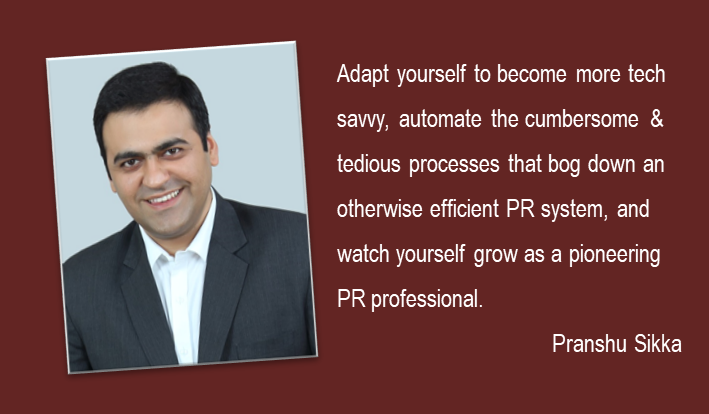Public Relations, like any other domain of work, has been shaped by a constantly evolving world. What makes it unique, however, is that it is one of the few professions where science, business management, and the art of conversation come together to create a sizable pull on opinions.
With the evolution of PR over the years, there have also been many calls for accurate measurement of its impact on ROI. In this, different aspects of technology have been of great aid to the industry. Take for instance social media, and how it has overhauled the way people communicate across regions and demographics. Then there are analytics software and AI tools that produce measurable results that take into account the importance of ROI. In fact, a plethora of agencies, corporate PR divisions, and even independent PR practitioners are now adapting to these changes to be able to prove results to their clients. Technology has, perhaps, driven one of the greatest revolutions in PR by bringing actual value to businesses and brands.
However, the rapid rise of technology in PR has also brought along with it concerns regarding technology overpowering humans. This is further compounded by generational wars between the young and the old, created by the former’s familiarity with technology and the latter’s inertia to utilize it fully.
So, how do you ensure your employability as a PR professional in a digitally-disruptive world?
By teaching correct competencies and planning the future with a farsighted mindset.
Human connection, for example, is a key aspect of PR, and in this new digitally-led world, technology is going to become all the more important for effective human connection. Hence, it becomes crucial to evolve ourselves constantly with technology. If you think in terms of digital media, which has had a strong effect on PR, being adaptable to technology is going to prove very helpful. According to a report, tech metrics such as ‘engagement’ and ‘potential reach/impressions’ are critical to prove the value of PR work to stakeholders. Digital media also has a quick turnaround time, so you can get your client placed in the media as fast as you want to.
Today, most PR pros have given up on spreadsheets and switched to new-age digital PR tools, finding those better placed to help them work more efficiently and effectively. Technology in PR has also helped discover critical consumer insights and deliver data-driven results more comprehensively. Not just that, technology has helped eliminate outdated PR methods and wasteful processes. The time you once dedicated to creating exhaustive media lists and sending individual emails to journalists, can now be used towards designing better communications strategy, building stakeholder relations, and improving processes. All of this has been made possible because of technology.
Obviously, there are still many old-school practices that make the profession of PR what it is. And just because technology has made the job more efficient, doesn’t mean it can replace the core of what PR professionals do – communicate a client’s story to the world. Crafting well-researched pitches and developing relationships will continue to require a uniquely human touch. But when you are able to understand how to integrate a useful piece of technology into your existing practices, you are in a better place to deliver efficient and cost-effective results to your clients.
So, adapt yourself to become more tech savvy, automate the cumbersome and tedious processes that bog down an otherwise efficient PR system, and watch yourself grow as a pioneering PR professional.
The views and opinions published here belong to the author and do not necessarily reflect the views and opinions of the publisher.



Be the first to comment on "How to stay PR-employable in a digitally disruptive world"